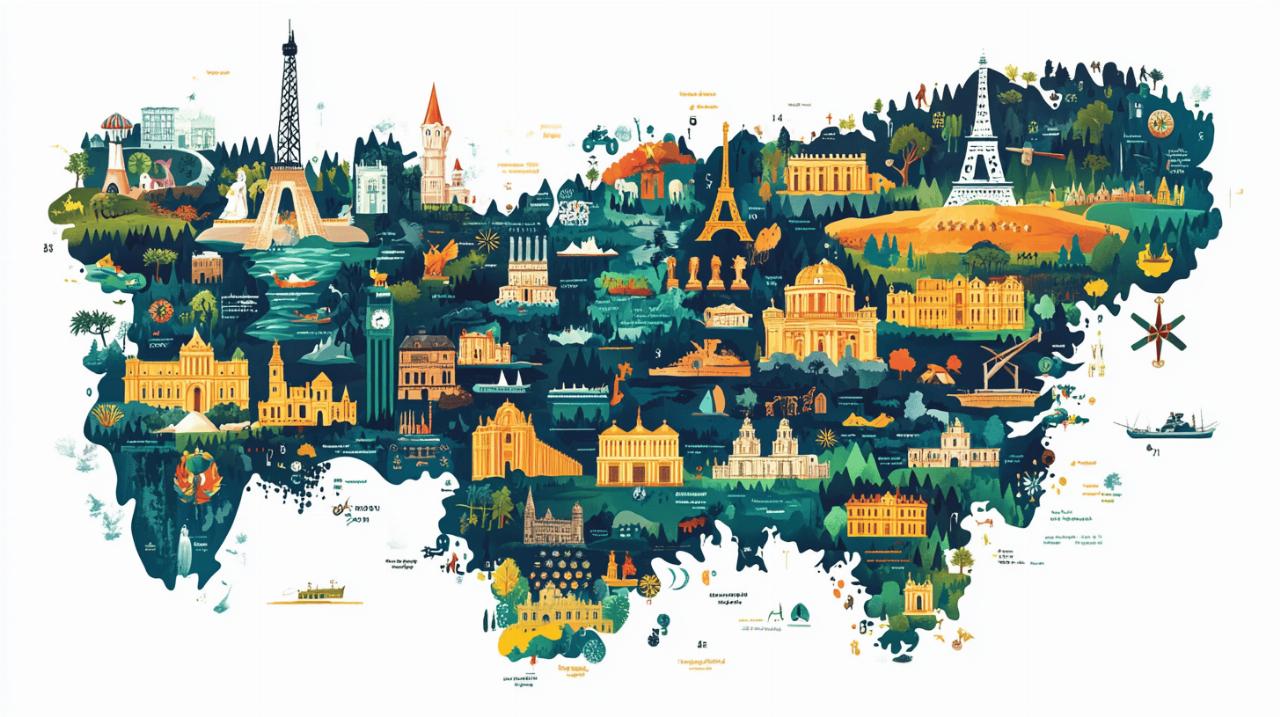France, as one of the economic powerhouses of the European Union, has a diverse and robust economy that contributes significantly to European prosperity. The French economic landscape consists of several interconnected sectors that collectively drive national growth, employment, and international trade. Understanding these sectors provides valuable insight into how this major European economy functions and adapts to global challenges.
The dominating tertiary sector in france
The service sector, also known as the tertiary sector, represents the largest portion of the French economy. This dominance reflects a broader transition that many developed economies have undergone, moving from manufacturing-centric models toward service-oriented structures. The tertiary sector encompasses a wide range of activities that do not produce tangible goods but instead provide essential services to businesses and individuals.
Financial services and property market dynamics
Financial services constitute a crucial component of the French tertiary sector. Banking, insurance, and investment services contribute substantially to the national GDP of EUR 2.2 trillion. The property market is deeply intertwined with financial services, as it involves mortgage lending, property management, and real estate services. The French government has implemented measures to improve housing accessibility, including the elimination of housing tax for many households, which has impacted property market dynamics and associated services.
Healthcare, social action and education's contribution
Healthcare, social services, and education form another significant segment of the tertiary sector. France is renowned for its comprehensive healthcare system and educational institutions, which not only provide essential services to citizens but also generate substantial economic activity. These services create numerous employment opportunities and contribute to the overall wellbeing of the population, indirectly supporting economic productivity across all sectors.
Secondary sector: manufacturing and construction
The secondary sector, comprising manufacturing and construction activities, remains vital to the French economy despite the tertiary sector's dominance. This sector transforms raw materials into finished products and creates physical infrastructure, playing an essential role in economic development and employment.
The Growing Role of Construction in French Economy
The construction sector has become increasingly influential in the French economy, generating a turnover of EUR 442.0 billion in 2020. Despite experiencing a 11.9% decrease compared to 2019, largely due to the global pandemic, the sector has shown resilience and adaptability. The French government has implemented several initiatives to bolster construction activities, including allocating EUR 5.8 billion for improving energy efficiency in buildings and EUR 13.7 billion for transport infrastructure improvements by 2023.
Major infrastructure projects are reshaping the French landscape, with the Grand Paris Express representing one of the most ambitious undertakings. This project aims to transform the Greater Paris region through 200km of new metro lines and 68 new stations, with a total cost of approximately EUR 42 billion and completion expected by 2035. Similarly, President Macron's announcement of plans to build six new European pressurised nuclear reactors at a cost of EUR 67.4 billion highlights the government's commitment to infrastructure development.
Manufacturing industry's current position and challenges
The manufacturing industry in France faces both opportunities and challenges in the current economic climate. While its contribution to land take has increased, reaching 20% in 2018, the sector confronts issues such as rising costs, stricter environmental regulations, and global competition. The implementation of RE2020 building regulations and the Zero Artificialisation Nette objective have increased operational complexity for manufacturers, particularly those supplying the construction industry.
Recent economic indicators suggest a mixed outlook for manufacturing, with the PMI index showing signs of contraction. Labour shortages and supply chain disruptions have resulted in supplier delays, described as the worst in 18 months according to recent data. These challenges have prompted many firms to implement cost-cutting measures, including reduced purchasing and workforce reductions, contributing to employment decline across the sector.
Primary sector's enduring impact
 Despite its relatively smaller economic footprint compared to the tertiary and secondary sectors, the primary sector maintains significant importance in the French economy. This sector encompasses activities related to the extraction and production of raw materials and natural resources.
Despite its relatively smaller economic footprint compared to the tertiary and secondary sectors, the primary sector maintains significant importance in the French economy. This sector encompasses activities related to the extraction and production of raw materials and natural resources.
Agricultural production and its economic significance
France boasts one of Europe's most productive agricultural systems, making it a leading agricultural producer in the European Union. French agricultural products, particularly wine, cheese, and grains, enjoy international recognition and contribute significantly to export revenues. Beyond its economic value, French agriculture holds cultural significance and plays a vital role in maintaining rural communities and traditional landscapes.
Raw materials and resource management
The extraction and management of raw materials represent another component of the primary sector. Mining and quarrying operations make the most extensive use of built-up land per establishment, averaging 14,000 m² per site. Between 2009 and 2022, France converted approximately 25,000 hectares of natural or agricultural land to built-up areas annually, with economic activities accounting for about a quarter of this land take. The implementation of the Zero Artificialisation Nette objective aims to halve the rate of land take by 2031 compared to the 2011-2021 decade, reflecting growing environmental concerns about resource management.
SMEs as the Backbone of French Business
Small and Medium-sized Enterprises form the foundation of the French business ecosystem. These companies, known as PMEs in French, drive innovation, create employment opportunities, and contribute to economic resilience through their adaptability and specialization.
Regional Distribution and Economic Impact of SMEs
SMEs are distributed throughout France, though certain regions show higher concentrations based on historical, geographical, or policy factors. Their collective economic impact is substantial, with many generating billions of euros in turnover. However, these businesses face challenges such as late payments, which affect approximately 42.0% of B2B invoices in sectors like construction. The temporary corporate tax surtax introduced in the Finance Bill for 2025 primarily impacts larger companies, potentially giving SMEs a relative advantage in certain market segments.
'Made in France' Movement and Local Business Growth
The 'Made in France' movement has gained momentum as consumers increasingly value locally produced goods and services. This trend supports French businesses and helps maintain traditional craftsmanship and manufacturing expertise. The movement aligns with broader concerns about sustainability, quality, and economic sovereignty. As environmental regulations like the Climate and Resilience Law reshape business practices, many SMEs are adapting by focusing on sustainability and energy efficiency, often finding new market opportunities in the green transition.
Construction sector: navigating growth and challenges
The French construction sector represents a significant portion of the nation's economic landscape, contributing substantially to its GDP of €2.2 trillion. Despite experiencing a 12.5% production drop between 2015 and 2020 and an 11.9% turnover decline from 2019 to 2020 (to €442.0 billion), the industry remains resilient. The sector faces complex challenges including profitability concerns, with gross operating rates at 10.5% in 2018, lower than 2010 figures. Employment within construction has similarly struggled, with an 11.5% decline compared to 2010 levels, reflecting broader structural shifts in the French economy.
Infrastructure projects driving economic recovery
Major infrastructure initiatives are poised to revitalise France's construction sector despite recent challenges. The ambitious Grand Paris Express project stands at the forefront, encompassing 200km of new metro lines and 68 new stations with a total investment of approximately €42 billion scheduled for completion by 2035. Line 15 South is slated to open by late 2026, with Lines 16 and 17 following in the second quarter of 2027. Further bolstering the sector is President Macron's nuclear energy programme, which includes plans for six new European pressurised reactors valued at €67.4 billion. The government has also allocated substantial funding for transport infrastructure, with €13.7 billion earmarked through 2023 and €4.4 billion specifically for railway network modernisation. High-speed railway projects such as Montpellier-Perpignan (€5.3 billion) and Marseille-Nice (€19.4 billion) further illustrate the scale of investment. These projects are emerging as bright spots in an otherwise challenging landscape, with the most recent PMI data showing civil engineering as the only expanding segment within construction, reaching 46.7 in August 2025—still indicating contraction but at a significantly slower pace than previous months.
Sustainability regulations reshaping the industry
Environmental regulations are fundamentally transforming France's construction sector, creating both challenges and opportunities. The Climate and Resilience Law and updated RE2020 building regulations are steering the industry toward a greener future, albeit with increased compliance costs. The Zéro Artificialisation Nette (ZAN) initiative aims to halve land take by 2031 compared to 2011-2021 levels, directly impacting construction practices. Currently, France converts approximately 25,000 hectares of natural or agricultural land annually, with economic activity accounting for nearly 5,000 hectares. The government has allocated €5.8 billion specifically for improving building energy efficiency, whilst the Great Investment Plan includes €9.0 billion for renovations and €7.0 billion for renewable energy projects. These sustainability measures coincide with significant sector challenges, including persistent labour shortages making recruitment difficult and late payments affecting 42% of B2B invoices. The recently introduced corporate tax surtax for 2025 is further straining major firms, with Eiffage projecting an additional €135 million tax liability and Vinci anticipating approximately €400 million in increased taxes. Despite these pressures, the sector's long-term forecast suggests gradual improvement, with PMI projections trending toward 51.50 points in 2026 and 53.40 points in 2027, potentially signalling a return to growth after the current period of contraction.





